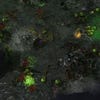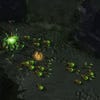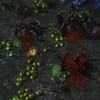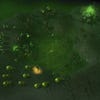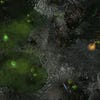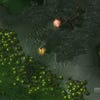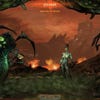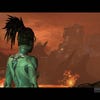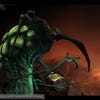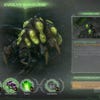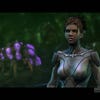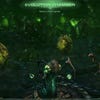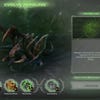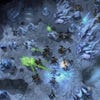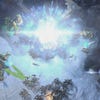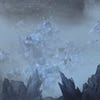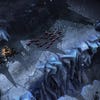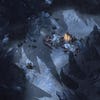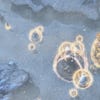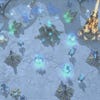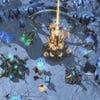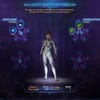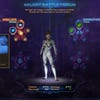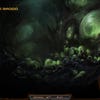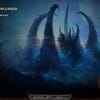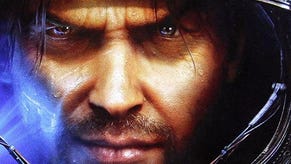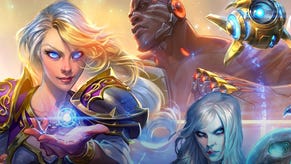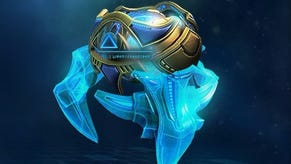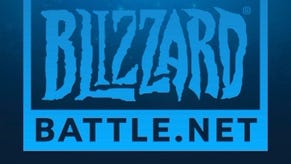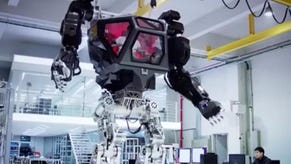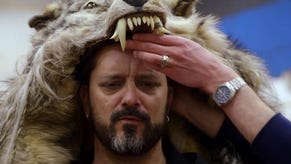StarCraft II: Heart of the Swarm
We got the HotS for it.
The mission ends with the Protoss getting ready to escape and spread the word of Kerrigan's return, setting up the next Kaldir mission as a brutal hunt to silence any survivors of Kerrigan's arrival. It shows how neatly Heart of the Swarm's narrative will slot into its new planet-based structure of mission 'sets'. In Wings of Liberty, you could hop from planet to planet; here, you'll commit to a planet's two to four missions and then see them through.
Then there's the evolution of your Zerg forces. An NPC called Abathur, a rather slimy and physiologically queasy creation, watches over a between-mission evolution chamber where unlocked Zerg units can be upgraded and eventually changed into new types of monster. With the Roach, for example, 'mutagens' gathered in-game can be spent to upgrade it with Chitinous Plating (+1 armour), Bile Ducts (+2 damage) or Organic Carapace (+2 life regeneration) – and when two of these are in place, the Roach can be evolved.
Roaches can become Prowlers, which can move while burrowed (i.e. invisible to the enemy), or the irresistible Leeches. The latter gain health for every kill and heal rapidly when burrowed – they're very, very difficult to kill. Lovely. Banelings are even better – a suicidal melee unit with splash damage, the Splitterling evolution sees two 'medium' Banelings emerge scuttling from the first explosion and a further two small Banelings from each of their detonations. It looks like it should: an indefensible, swarming monster.
Finally, Zerglings can evolve into Swarmlings, which hatch three to an egg (rather than two) and allow you to build a huge numerical force near-instantaneously, which is always the best bit about playing Zerg. Or you can plump for Raptors, which can leap to close with enemy units and have additional life. If the name isn't enough of a Jurassic Park reference, the in-game models are also altered with a fetching purple frill atop the creature's spine, just to make it clear how badass they are.
If all this doesn't make it clear enough, let Browder lay it down for you: "This is about Kerrigan leading swarms of faceless creatures in to destroy the enemy." In-game she's an absolute beast and a significant change to the core mechanics of StarCraft – no other caster unit has approached this level of power.
There are a few wrinkles in the build we play. Kerrigan's personality veers a little between determination to wipe out anything opposing her ("No-one gets out alive. No-one.") and more mawkish lines like, "The hunt is bloody. I can't believe I'm slaughtering innocents." But Browder is upfront about the dialogue and voice-acting being placeholder, while lead writer Brian Kindregan says they're still "smoothing out" the progression – and, of course, we played isolated missions rather than an individual arc.
What they've clearly got right is the atmosphere. The hubs between missions, and the whole look of Heart of the Swarm's interface and environment, are infused with the moist and creeping personality of the Zerg, every surface chitinous, every hole infested. In the game, it's a sense of power, of inevitability – of striking hard and fast while building an unstoppable ball of claws and bile that soon rolls forth. It plays very differently to Wings of Liberty's campaign, and feels like it should: alien and insectoid.
Heart of the Swarm is still evolution rather than revolution, of course, but it's a crucial step for StarCraft II as a whole. That's because, while it may be the modern king of the competitive RTS, its rank as a single-player experience is less clear. By letting you talk to the monsters, and control them as the biggest monster of all, Heart of the Swarm doesn't just promise change - it gives the silent majority their very own god of war.
StarCraft II's multiplayer is an immovable object, and it will always be that way for the series. But Kerrigan, all sauced up and ready to rumble, feels awfully like an irresistible force.

